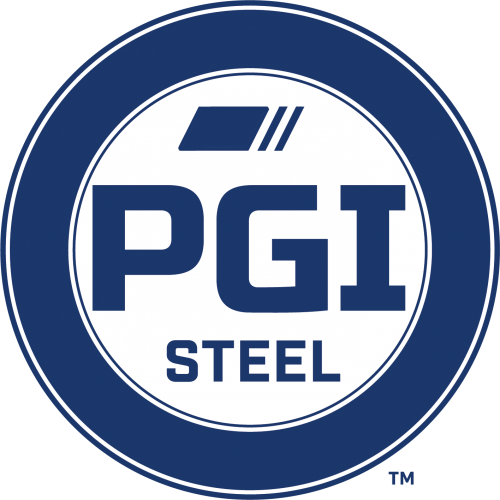When you’ve been in the steel grinding business as long as we have, you begin to see patterns… or “Frequently Asked Questions” that we receive from our newest clients or companies who request quotes from us. PGI has been in the grinding business for over 50 years, but we realize some of you may be new to these terms. When our experienced estimators ask questions to provide you with the most competitive quote that delivers a product that matches what you need, you may be caught like a deer in headlights.
So we thought we’d share some of the questions we receive most often and give you some definitions for words we use regularly. Hopefully this information will help you – and that you’ll let us help you answer any other questions the next time you’re looking for custom steel plate work.
What is Blanchard Grinding?
Blanchard grinding gets its name from the Blanchard Machine Company, a specialist in rotary grinding machines, and is also referred to as vertical spindle grinding. Blanchard grinding is used to quickly remove stock from one side of a large part. Blanchard grinding leaves a specific finish pattern on surfaces, produced by the nature of the operation, and of the movement of grinding tools across the surface. The Blanchard grinding process is ideal for surfaces too large for disc grinding, such as plate stock, die blocks and rotary tables. In a Blanchard grinding machine, the grinding wheel is mounted on a vertical spindle, and moves in a direction counter to the rotation of the magnetic chuck. Blanchard grinding machines can produce parts with very close tolerances.
What is Surface Grinding?
Surface grinding is a process that moves a grinding wheel or segment in a plane while the wheel contacts the work piece and removes material to create a flat surface. Parts may require surface grinding to achieve a flat surface, a very accurate thickness, a very smooth surface, material removal for hard materials and when material needs to be removed quickly. There are two types of surface grinding: vertical spindle grinding (also called Blanchard Grinding) and horizontal spindle grinding. Horizontal spindle surface grinding is, in most cases, a secondary process to improve surface finish, flatness or parallelism after Blanchard grinding is complete.
When Should I Ask for Flatness?
Flatness has been described as the distance between 2 parallel line as they relate to a surface. You should specify flatness in your grinding order when your engineering drawing includes symbols or text to provide instructions on how to set a guide line when making a part or when your part needs to be flatter than a standard mill rolled plate. (Ex: A ½ inch HR plate from the steel mill has a flatness allowance of 5/8 over a 4 ft. distance.) Common symbols for Flatness are ▱ for flatness and ∥ for straightness.
- Base plates – when setting equipment, a flat base plate will eliminate shimming and minimize labor cost.
- Machine table tops – when building an automated machine, it is important to start with a flat surface to mount critical close tolerance components.
- Stamping components – when building bolsters, die shoes, parallels and other components, it is important your parts be flat or restrained in the flat condition to eliminate stack up errors.
- Machining set up – Sometimes your print does not call out flatness. It is still important to make you machining set up easier and will help hold machining tolerances.
What is Parallelism?
Parallelism is the relationship a surface has to another surface or datum. As it relates to ground plate, a plate is parallel if its thickness is consistent all over the plate. Parallelism is normally checked using a micrometer or caliper.
Parallelism is different than flatness because it is the relationship between two surfaces, while flatness describes a single surface. Parallelism is critical when consistent thickness is required.
The symbol for parallelism is // and is usually follow with an allowed deviation and a datum surface callout.
What is Squareness?
When two surfaces are square, they are at 90˚ of each other. This will usually be written as □. Normally one surface is the datum (fixed point) and a tolerance is specified for how a second surface relates to the datum. The datum can be a surface on the part, the centerline of a bore or a surface off the part on a mating structure.
The squareness tolerance is normally written as the amount of variations over the length of the second surface (Ex: ⊥ .005 in.) The second surface could be greater than or less than 90˚ no more than .005 in. over the length. Another way squareness or perpendicularity tolerance can be written is the amount of degrees a surface can vary.
How Much Does a Ground Plate Cost?
There are several factors in determining the cost of a ground plate. The three most significant factors are the plate thickness, the surface area and the stock removal requirements. Other factors include requirements for flatness, parallelism, surface finish and the number of pieces ordered. Close tolerance requirements on any of these variables could have a significant effect on the cost of ground plate. Therefore, it is important to know and understand the specifications of your project needs before requesting a quote.
- Plate Thickness and Material Type
- Surface Area and Stock Removal Requirements
- Thickness Tolerance
- Flatness Tolerance
- Parallel Requirements
- Quantity Requirements
These are just a few of the questions we receive every week. Do you have a question about a drawing or a project that you’re working on that we didn’t answer? Let us help! Contact Us today.
